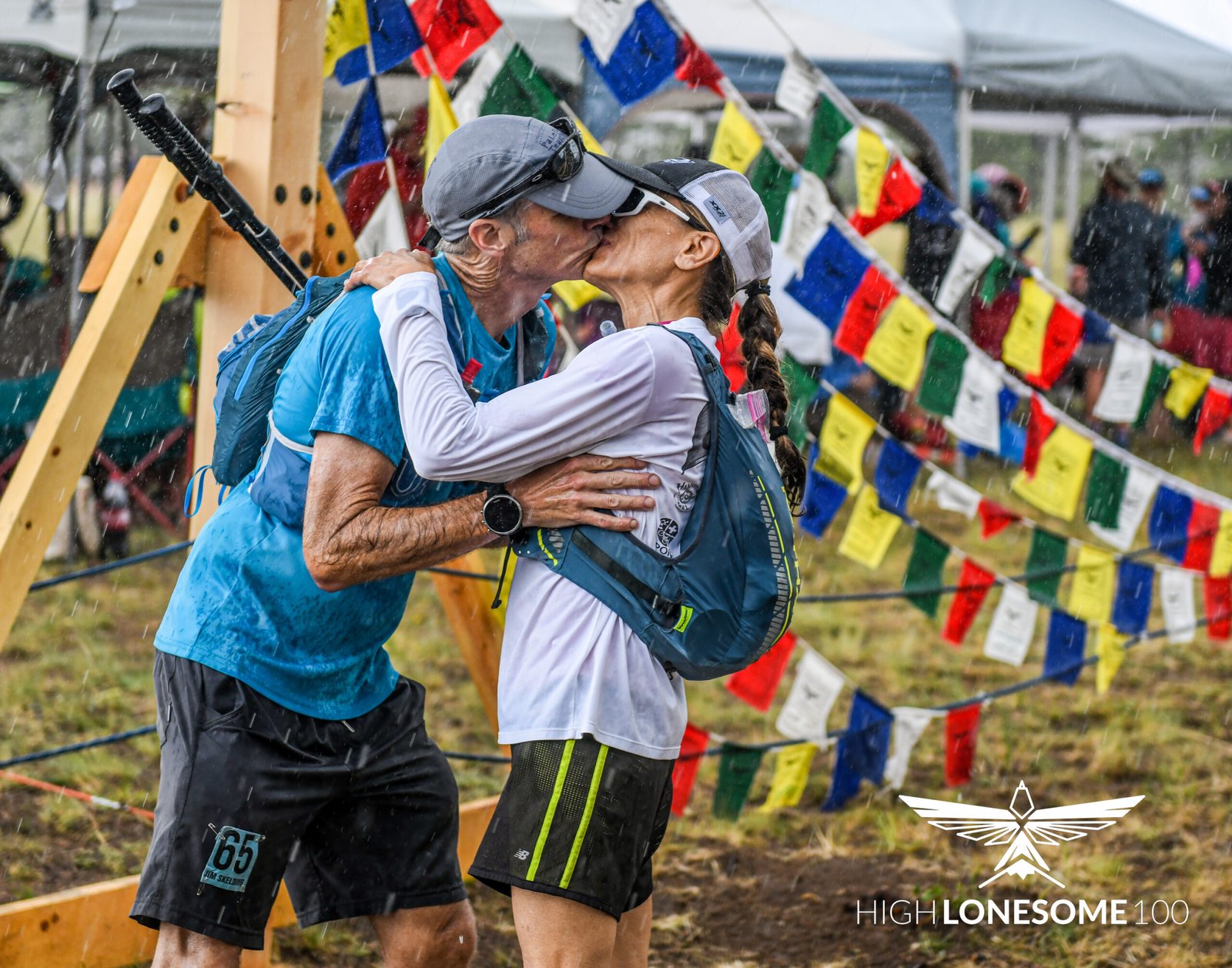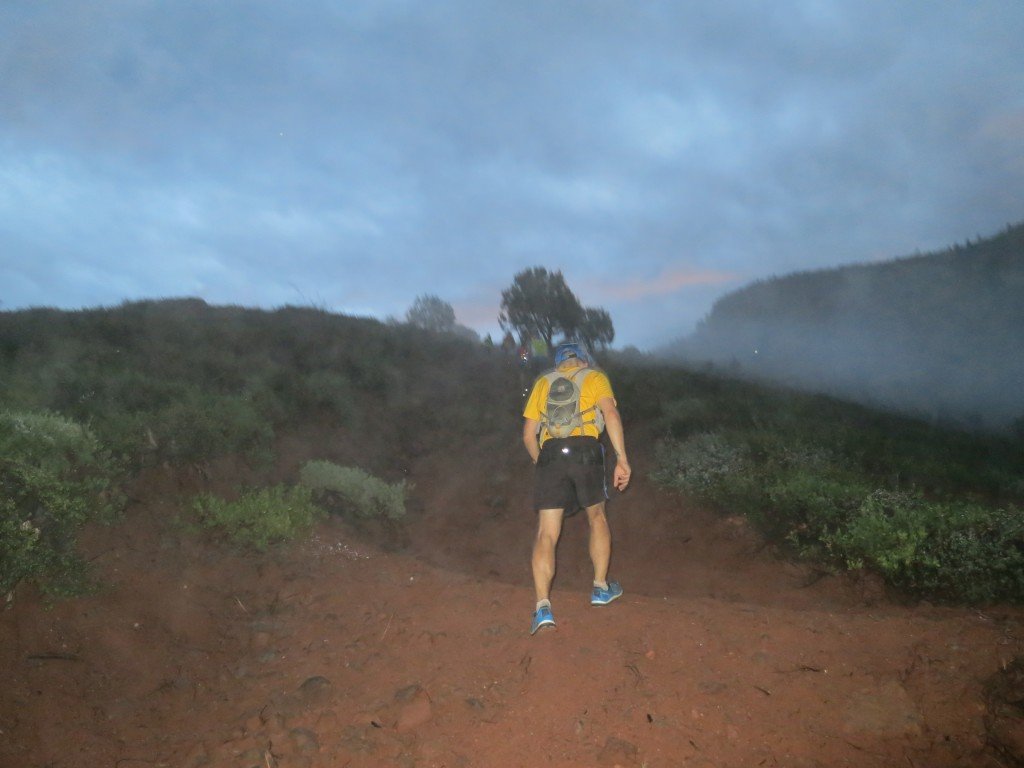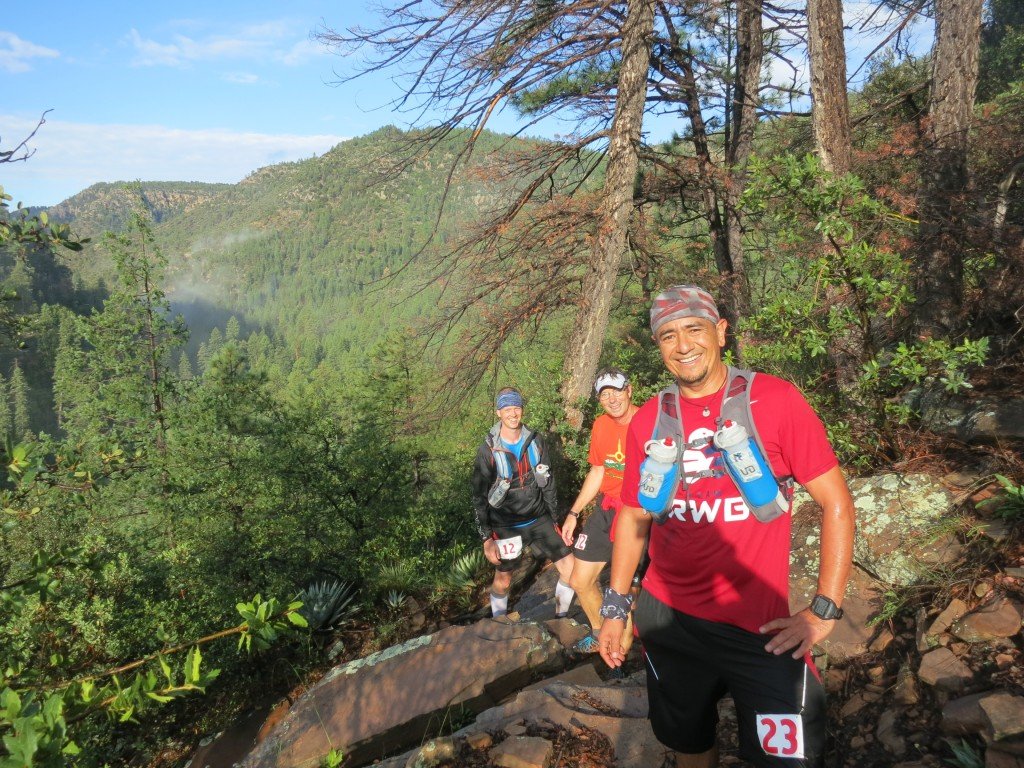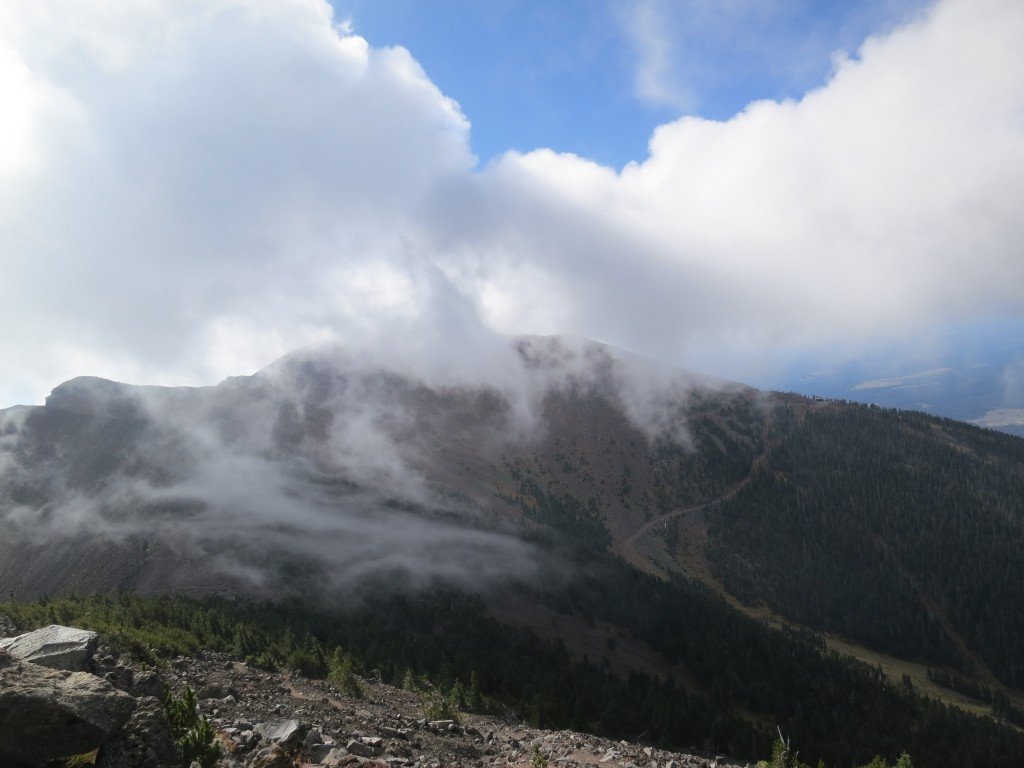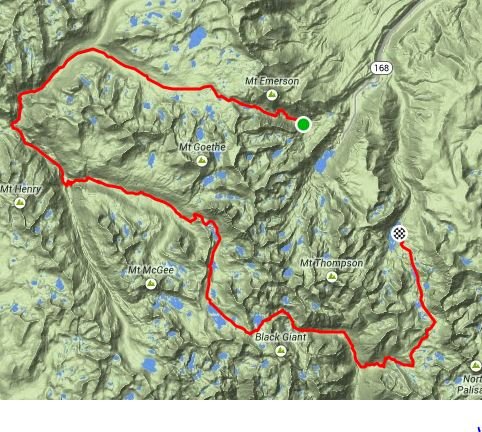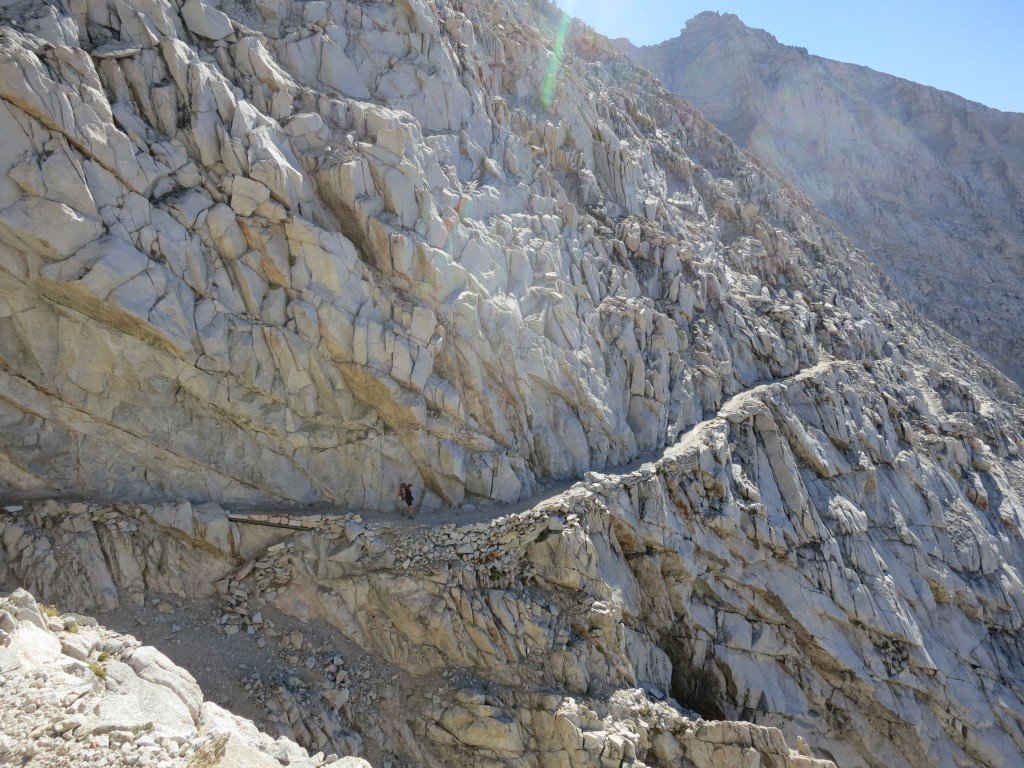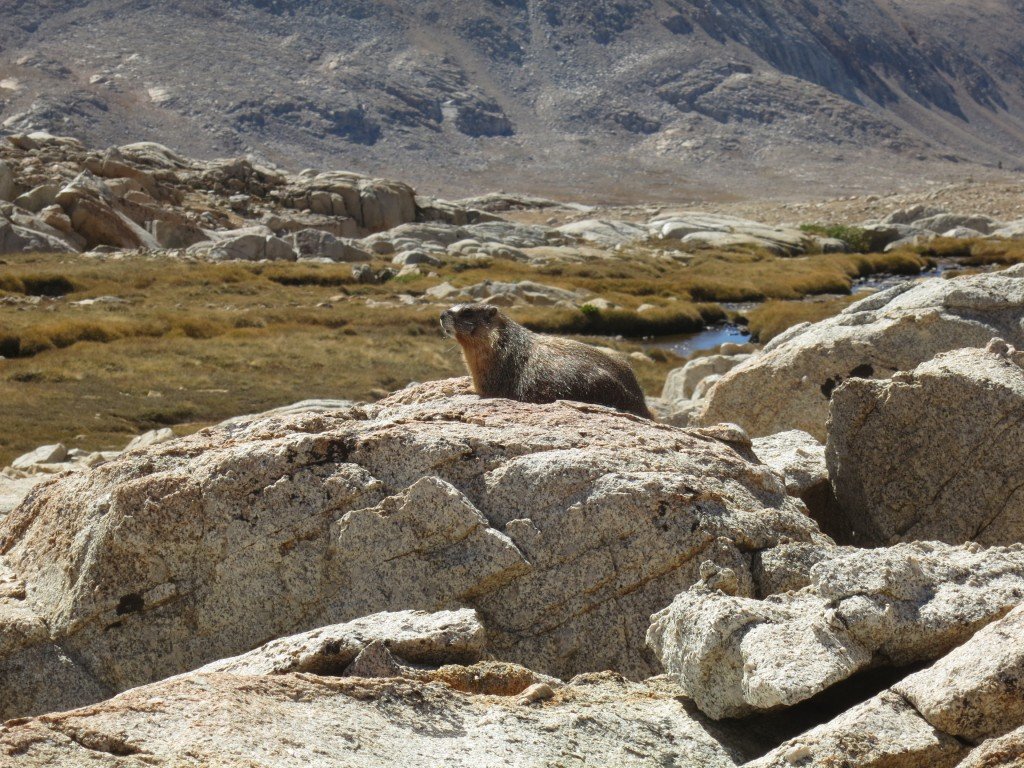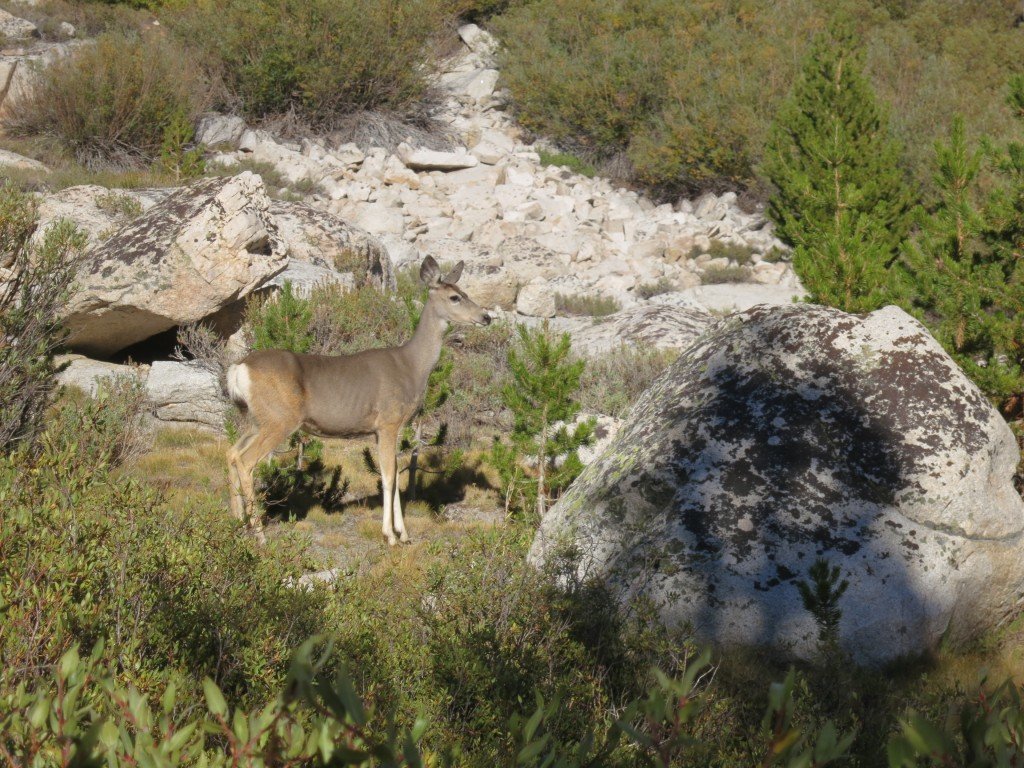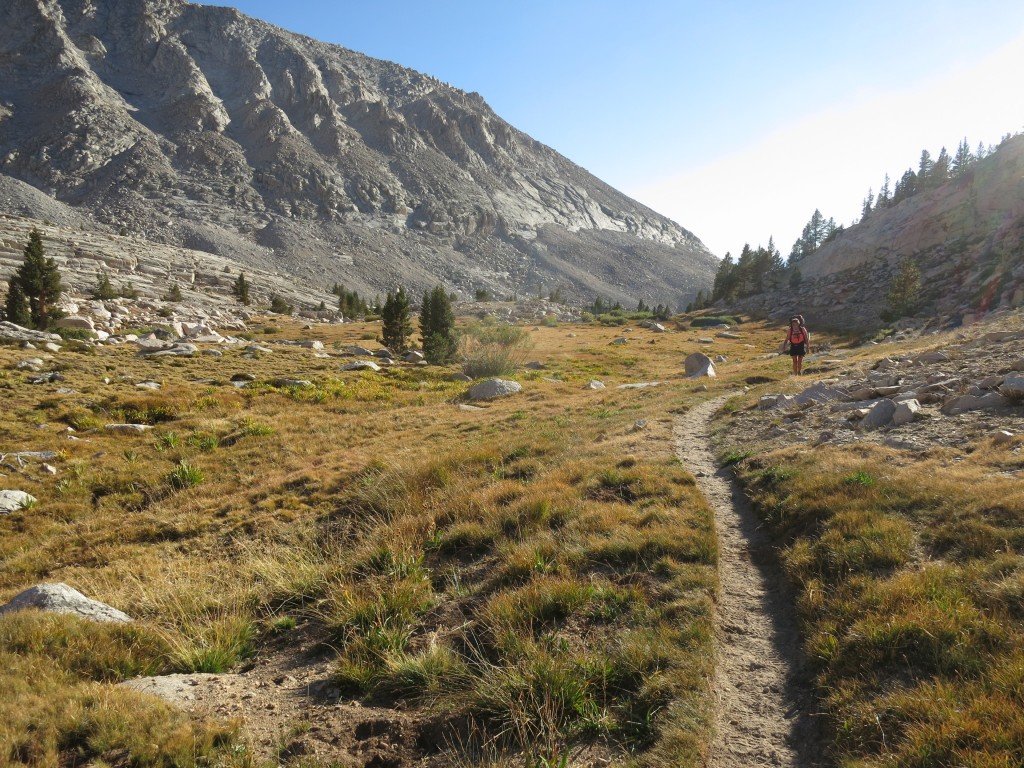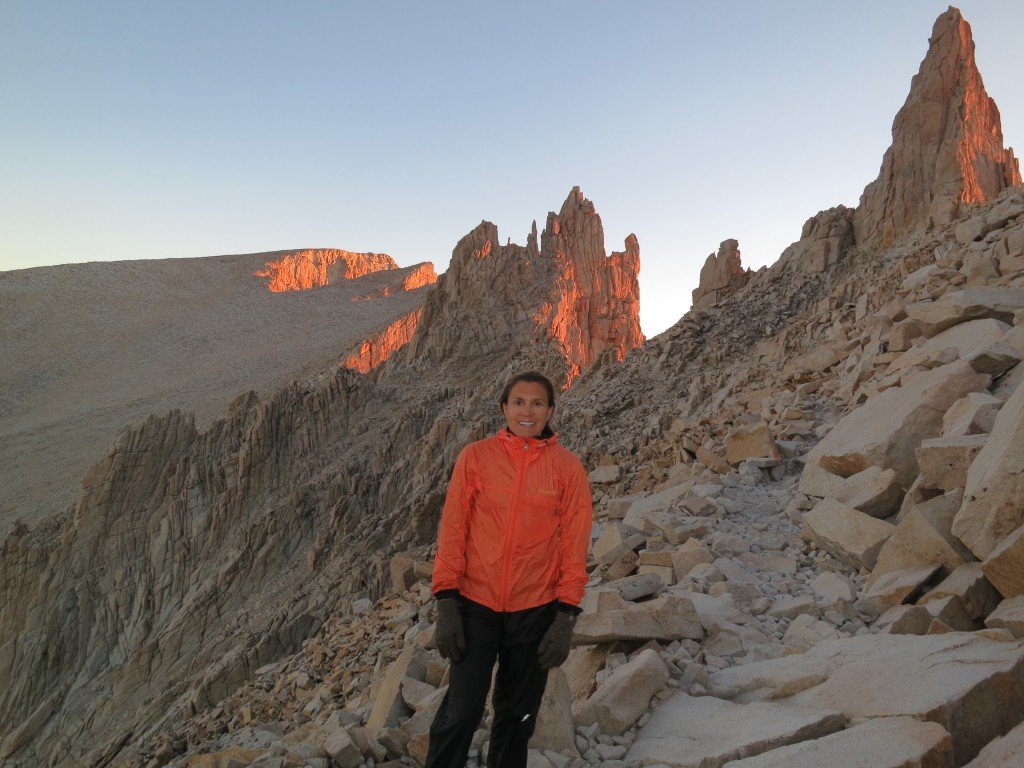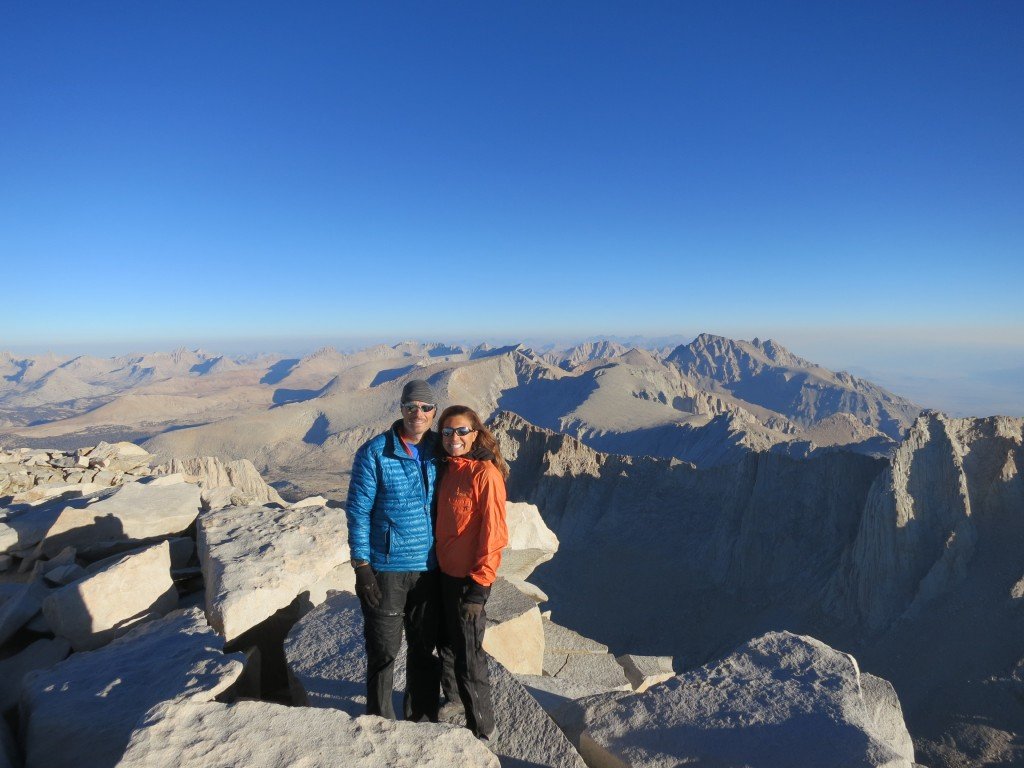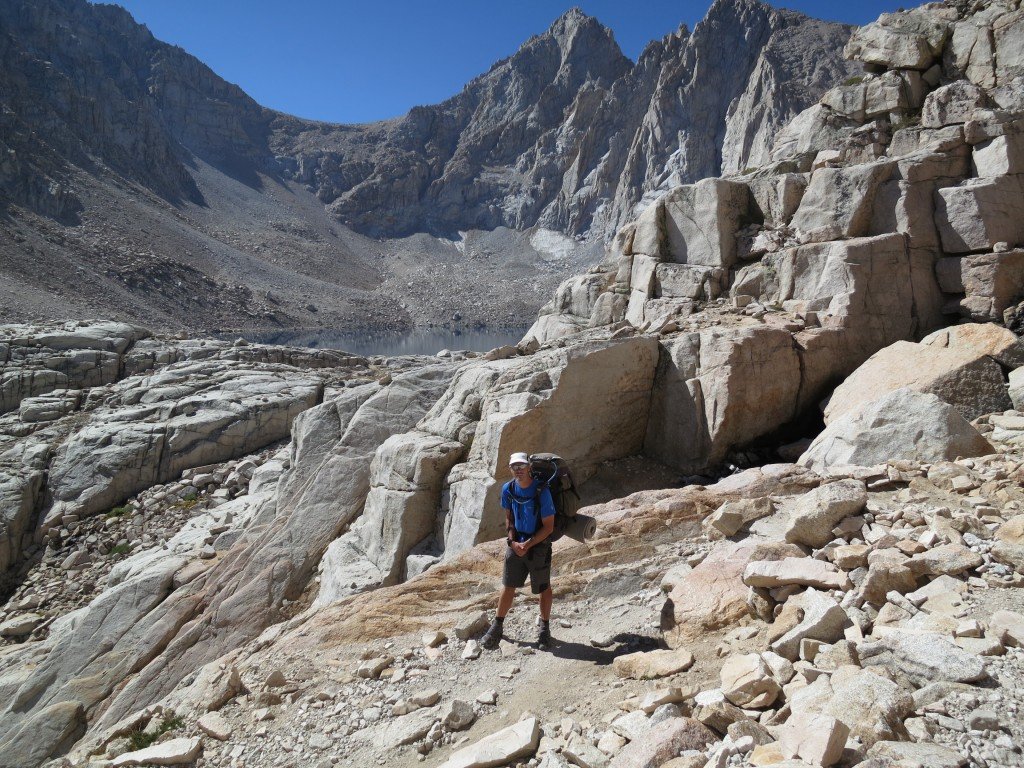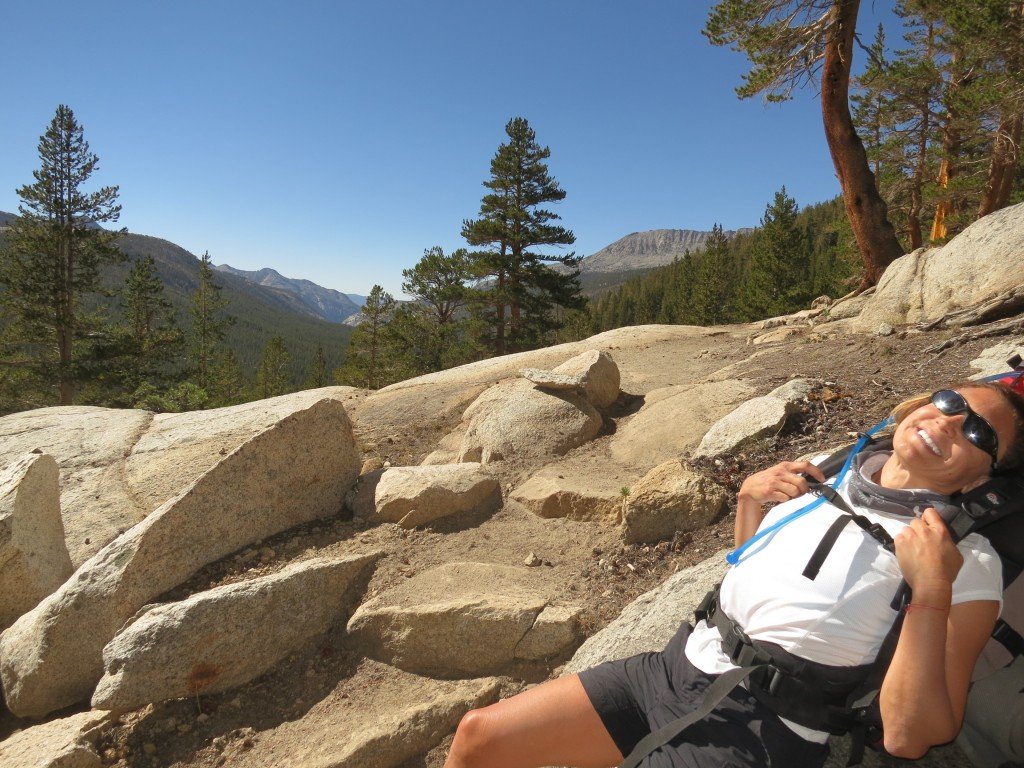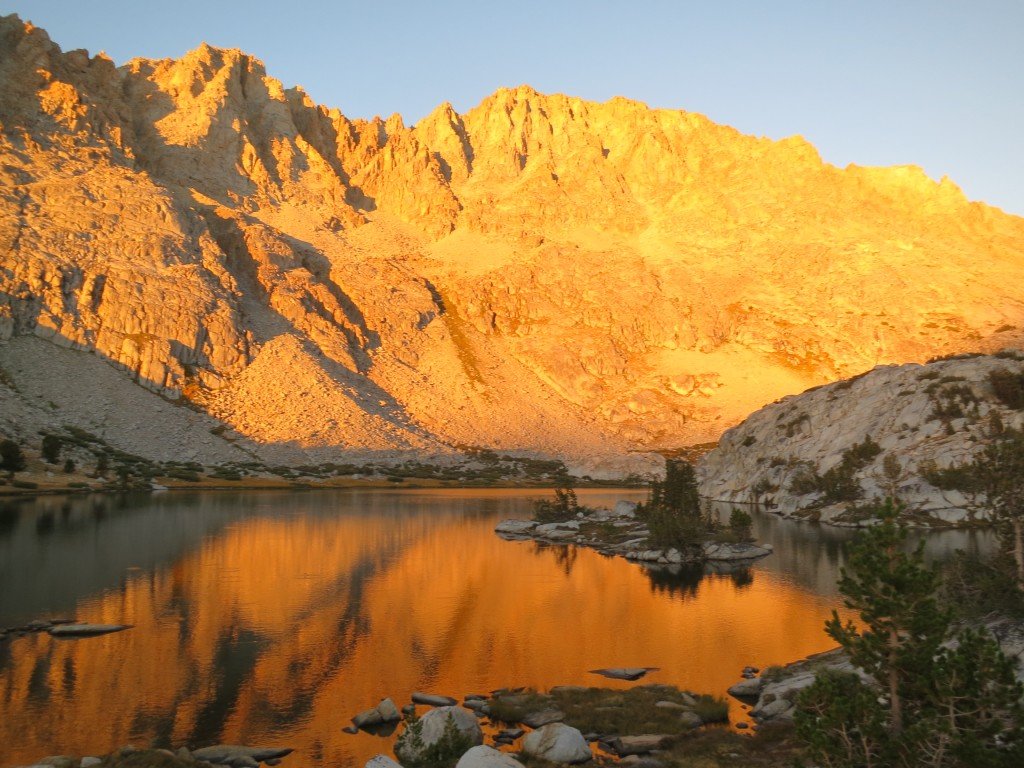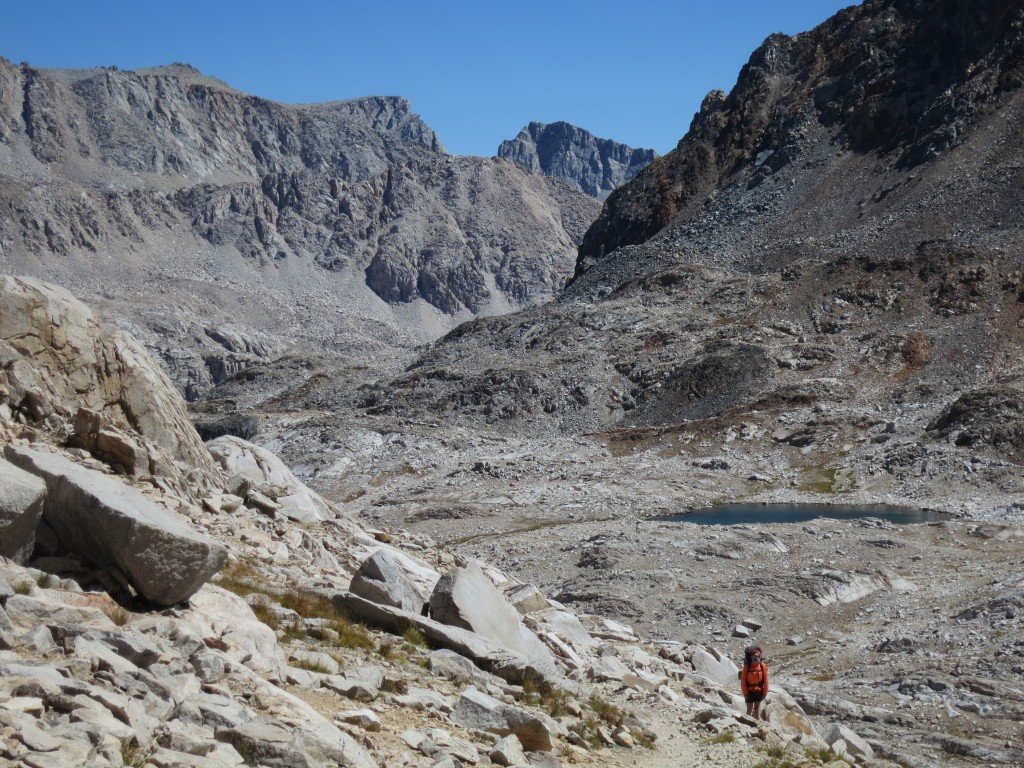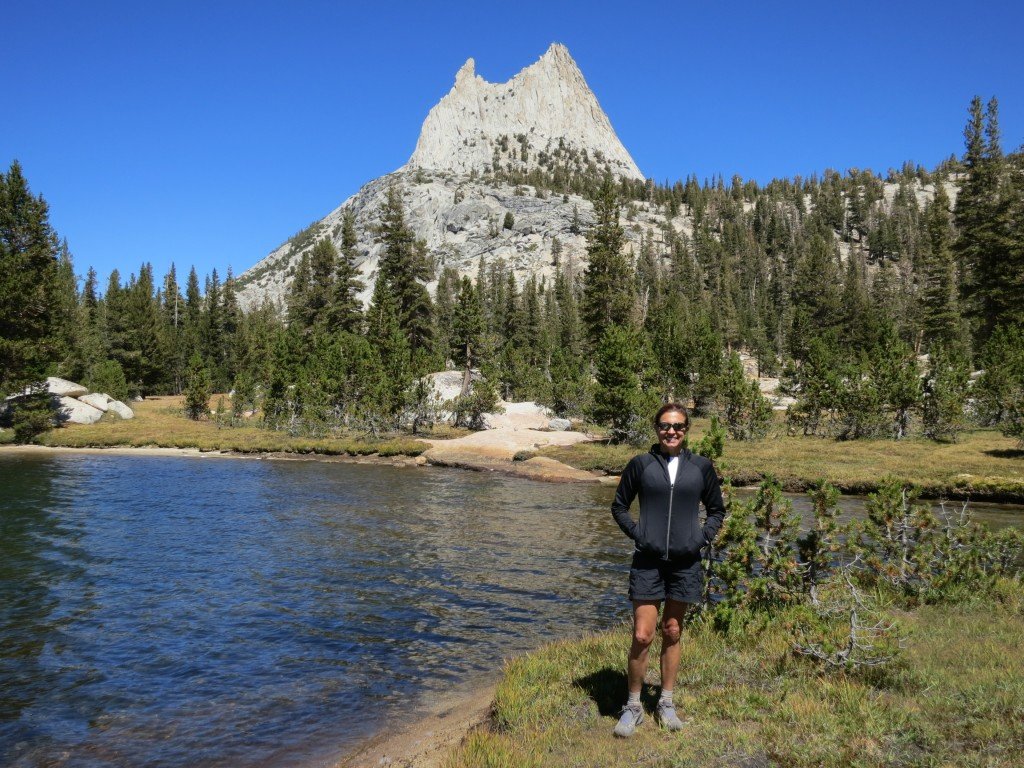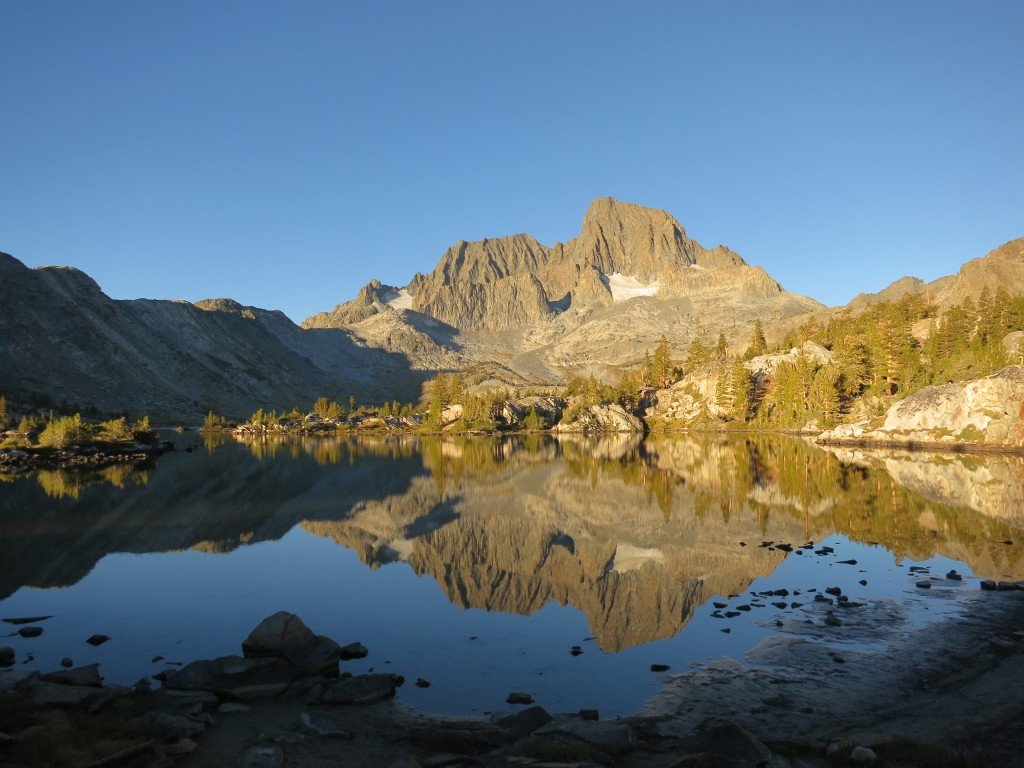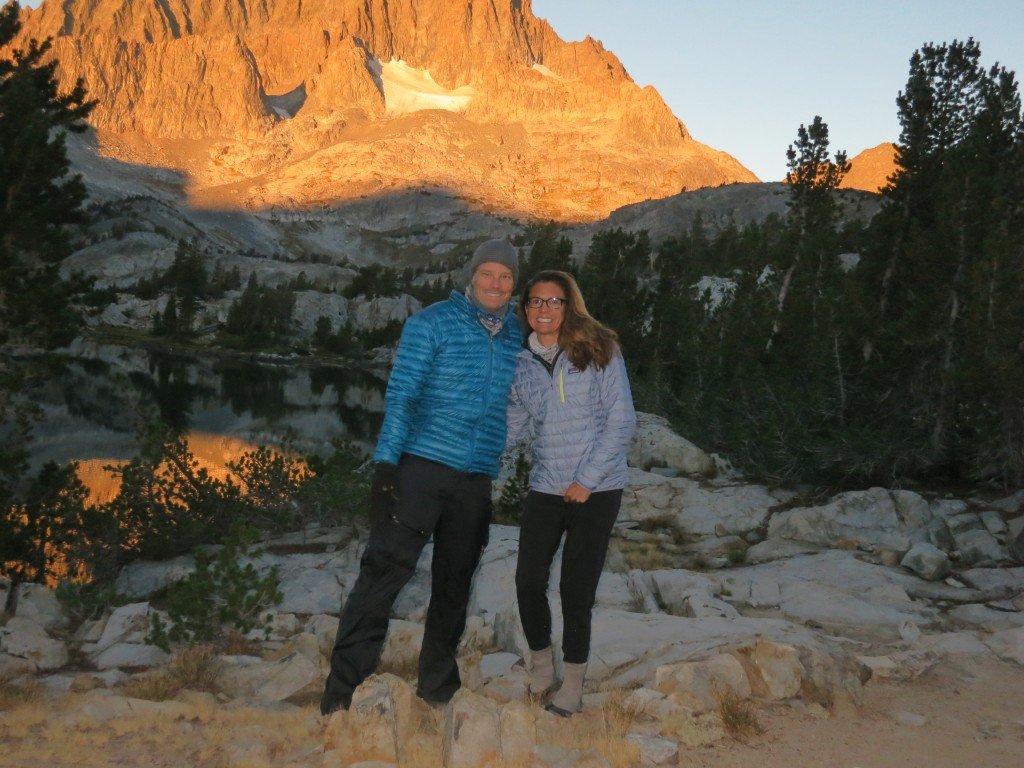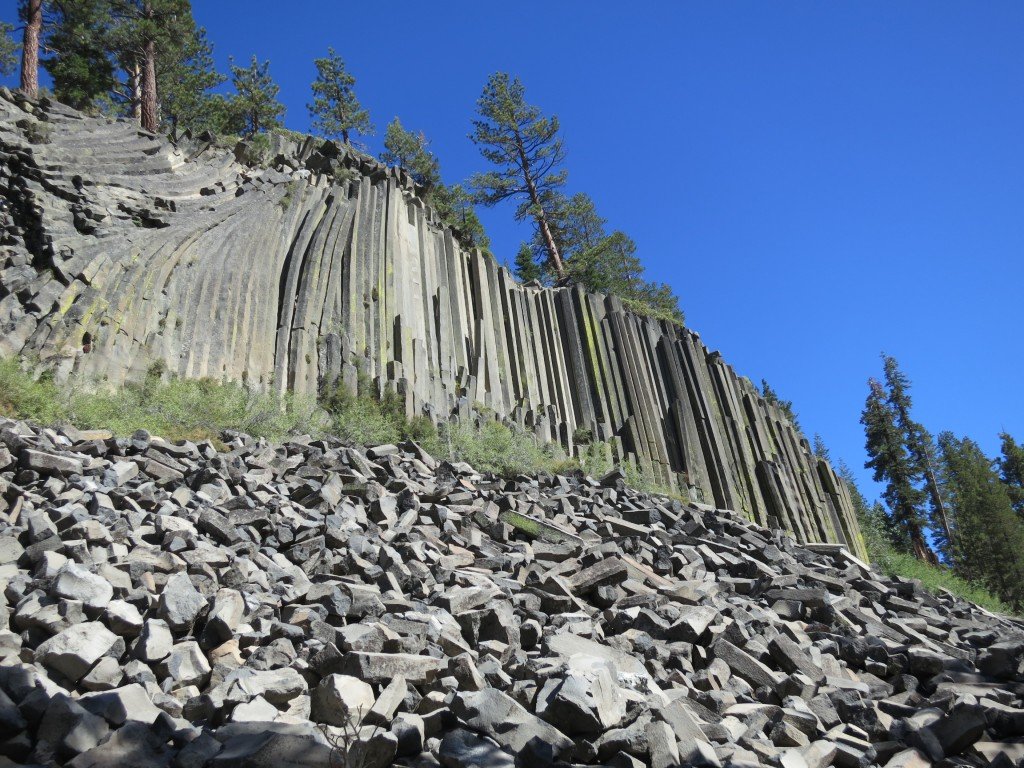The race did start as planned at 6am Saturday morning, however it was called off at 5:40pm due to the weather. I wish my pictures were better because it’s really hard to understand the conditions unless you were in them.
I arrived to the start just after 5am and it was raining gently. The rain stopped for the actual start of the race, but you could hear the thunder in the distance. As we climbed into Pine Canyon, we were surrounded by low clouds and the humidity was close to 100%.
Once we hit the switchbacks, the sun peaked out and we were optimistic that the weather was going to break.
It didn’t – for the next 4 hours small rain showers came and went and it turned the trail into an ice skating rink. We would take one step and slide. Plenty of people were covered in mud from hitting the deck on the sloppy trails. Fortunately, I never went down.
I got to Washington Park (mile 27) about 1 hour later than I wanted, but still faster than last year. I only took 10 minutes to change shirts, swap backpacks, and get something to eat. I then proceeded to climb the 2 miles to the top of the rim. At the higher elevation, it was at least 15 degrees cooler and the wind was intense for the 4.5 miles on the rim road. I stopped several times to add layers to ward off the cold. At the next aid station, I ate some soup and a burrito that warmed me up. My warmth didn’t last as a major front passed over the rim. At least 2″ of rain dropped and the trails turned from muddy slop into rivers. Unless you wanted to walk in 3″ of rain that was trapped in the trail rout, you had to walk on the outside of the trail. The picture below isn’t the greatest, but you can see how hard the rain was falling and how dark it got at 3pm.
My $12 purchase the day before was a lifesaver. Everyone was drenched from head to toe, but I was nice and dry under my umbrella. We made it to the next aid station around 5:30pm and just as I was leaving, the announcement came over the radio that they were calling the race due to flash flooding below the rim. Hard to determine if I was happy or sad about it. The next trail I was heading to below the rim was the most technical and remote. I was not looking forward to having to navigate it in these conditions. Given the lack of gear preparations by some people I saw on the course, I definitely think that calling the race was the right decision.
All of us at that aid station got a lift back to the top of the rim and we hiked the final 2 miles back to Washington Park. In the end, I did 44 miles of the 106 on the course. One piece of good news was that I found out that my finish last year qualifies me for the Hardrock 100 It’s a slim chance that I would get an entry from the lottery, but I’m going to enter anyway.
From the Race website 09/28/2014, Race Cancellation Update :
The four lead runners passed through Washington Park mile 51 nearly an hour before the storm hit and ultimately were stopped at Hell’s Gate Aid Station and brought back down. 5th place and on back were held at Washington Park until the unanimous decision was made to cancel the race and avoid a potentially disastrous situation with dozens of more runners entering a fast deteriorating trail and high risk of flash flooding. Storms were forecast’d throughout the evening with more lightning. This proved to be accurate as it continued to downpour on and off, drenching an already saturated terrain further increasing flash flood risks long after the race was called off.
I know this region and these trails better than most anyone. I’ve spent an extensive amount of time on every section, in every kind of climate, weather, and scenario. While some runners are better suited for these challenging scenarios, with more experience in that kind of weather, the consideration for the safety of ALL runners had to be taken into account.
I don’t expect all the runners to agree with this decision. Nor do they need to. I have a responsibility for the safety of all the runners, volunteers, crews, and these take priority over qualifying for Hardrock, reaching a personal running goal or obtaining a buckle. It is very unfortunate and disappointing for all of us. I spend a great deal of my time, my weekends, my evenings and my free time in general, on top of a very busy work schedule, to put on this race with the help of a lot of friends and volunteers. I’ve heard people complaining that we canceled the race “because it was raining.” That is not accurate. Because of the excessive rain, and the terrain of the area, we are heavily prone to flash flooding in the area. Both the runners and along the control road where all the runners family and crew were driving to meet them. I’ve heard the Bear 100 rained for 12 hours and they didn’t cancel their race. Bear is in Utah. We are in Arizona. You can’t compare the two just because they both had raindrops. Different terrain, different landscapes, significantly different flash flood potentials.
For those that are downright angry with me for making this decision I ask for you to take a deep breath. It’s just running. It’s just a race. I cannot control the weather and I stand by my decision as the right one. There is an overwhelming number of veteran ultrarunners, RD’s that were present and those in the race itself that stated their agreement with the decision based on the facts at hand. This wasn’t a decision that was made lightly or one that any of us wanted to see happen. We spent the next four hours after the cancellation working to orchestrate an evacuation of all the runners from the course that chose not to run the safer sections coming down the Rim to Washington Park. Crews, volunteers, HAM radio support were incredibly generous with their time and vehicle space to get people back to Pine. We had all the runners accounted for by 9pm and everyone off the course.
I am truly greatful for all the support from the runners coming off the Rim for 51 miles and their understanding of the decision. Your overwhelming support is appreciated. Hopefully in 2015 we can have weather more in line with the first two years, 75 and sunny.
Until then…
